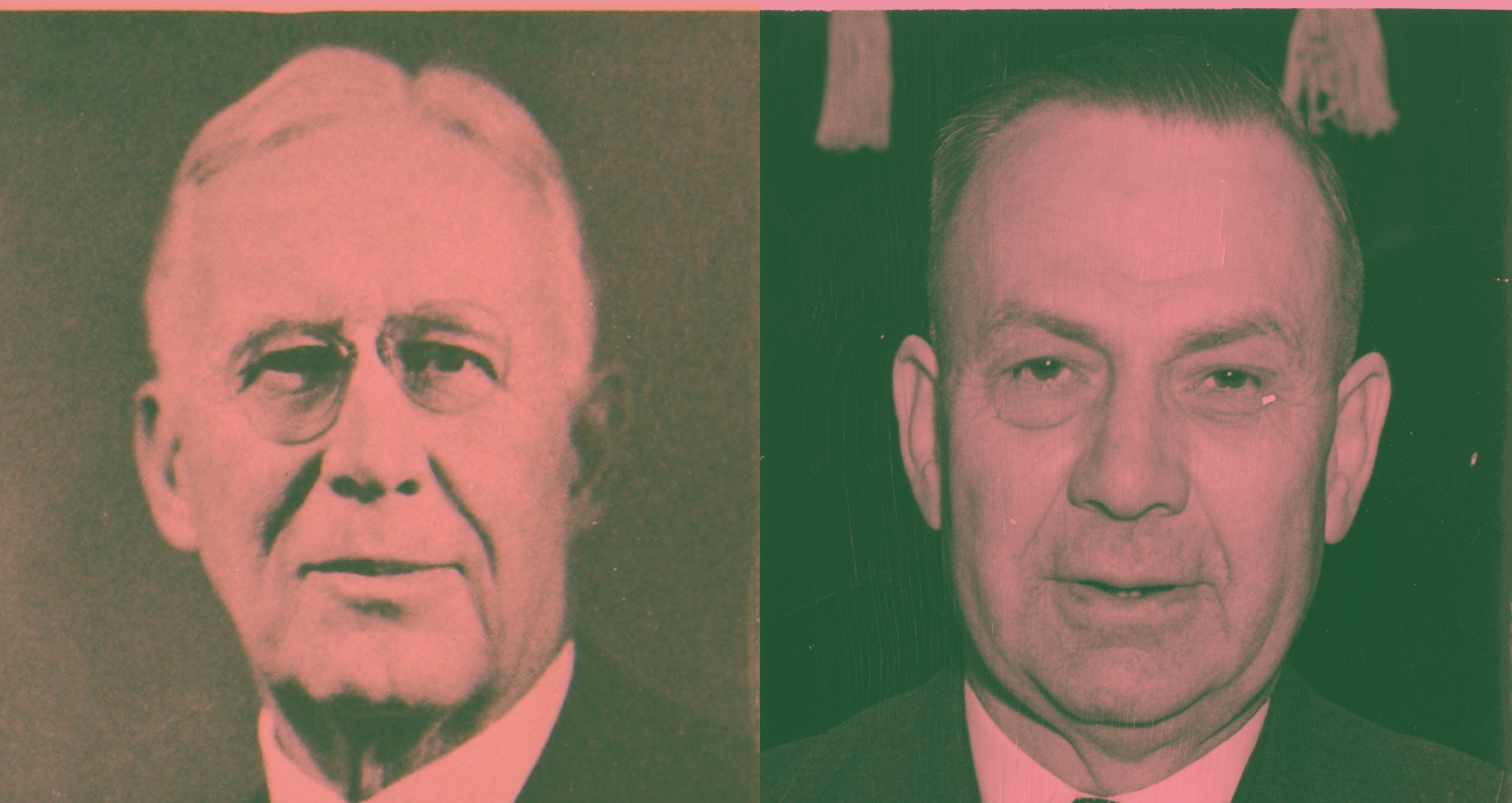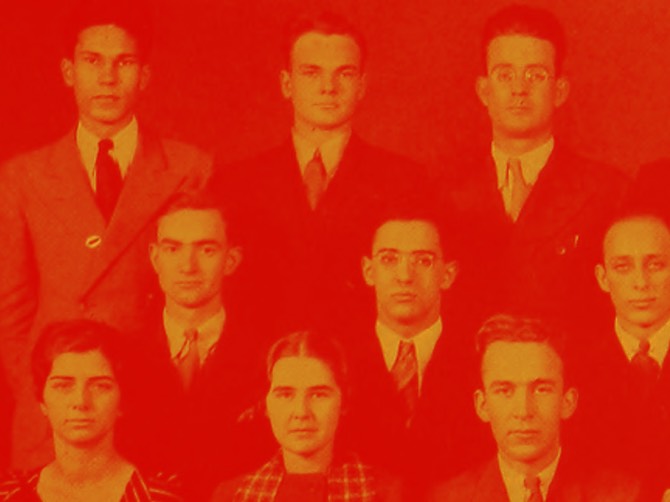How the History of the University of Minnesota is Remembered

Memory
How can the University remember those who created—and resisted—the policies of racism, antisemitism, and student rights, to support a diverse and egalitarian community?
Projects that raise the question of memory are often asked if it is fair to look at the past through the lens of the present. Some politicians, citizens, and writers wonder if it is appropriate to focus on decisions taken by leaders without paying attention to all of their accomplishments.
The range and variety of voices that reveal the past are key to history.
“A Campus Divided” documents the divisions, the debates, and the issues of the 1930s on the campus of the University of Minnesota. If we believe that “most” colleges or universities practiced racial segregation in some form, or that antisemitism was broadly accepted during this period, we exclude the debates that occurred in a time period. It is not hindsight that drives us to remember how problematic segregation was. Were we to accept the racial hierarchy as “normal,” we would erase the dozens, then hundreds, then thousands of people who opposed it at the University of Minnesota between 1931 and 1942. We would erase the impact of fighting fascism in Europe on the lives of people who rejected racism because it resembled Nazism.
Historical memory requires all of us to know what happened to all groups in a society. The histories of those without power are especially important to find and report. The range and variety of voices that reveal the past are key to history. At the same time, we are also called on to understand how those same relationships between the powerful and those with less power shape how we look back on the past. We risk the double injury of an erasure of what happened and how we recall it if we fail to do that.
Consequences
“A Campus Divided” attracted thousands of visitors to Andersen Library where the physical exhibition was mounted. The press coverage in print, digital, radio, and television spread the word about the University’s history and increased interest in the exhibition. Public history reached those who were interested because it was discussed in the public arena, including in the Jewish and African-American press. No one anticipated its success or the extent of public interest. An exhibition of documents spoke eloquently to students, faculty, and staff, as well as people from throughout the region, because it revealed a history that was unknown to most.
Press Coverage
American Jewish World
A different University of Minnesota
A thorough report on the exhibit, a brief history of the research process, and a detailed account of the various threads of the larger historical narrative. The article ends with one of the central questions posed by the exhibit: how do we choose who to memorialize and how have we commemorated their lives and work? How can we grapple with our shared history and reevaluate public displays of commemoration?
Date
April 26, 2018
Authors
Mordecai Specktor
Minneapolis Star Tribune
New exhibit reveals U’s dark history of segregation and anti-Semitism
Minnesota's largest newspaper devoted multiple pages to the exhibit and the history of on-campus racism, antisemitism, and surveillance. It featured student activists from the 1930s, and drew significant attention to the exhibit from beyond the campus.
Date
March 22, 2018
Authors
Sharyn Jackson
Minneapolis Star Tribune
University of Minnesota to probe its history of racism and anti-Semitism
President Eric Kaler announces the formation of the President’s and Provost’s Advisory Committee on University History in a letter given at a public event for the exhibition.
Date
March 15, 2018
Authors
Sharyn Jackson
Pioneer Press
UMN to examine its 1930s-’40s discrimination against Jews, blacks
President Kaler responds to the exhibit in an effort to confront the U’s history of racial segregation. Professor Prell does not call for specific outcomes, but rather that the campus reckon with its history.
Date
March 9, 2018
Authors
Josh Verges
St. Cloud Times
University of Minnesota to probe its history of racism and anti-Semitism
The article announces that a Committee on University History, to be led by Dean John Coleman, will advise President Kaler on how to respond to the exhibit.
Date
March 8, 2018
Pine & Lakes Echo Journal
University of Minnesota to examine its 1930s-era discrimination
(See above Verges article in the Pioneer Press)
Date
March 7, 2018
Authors
Josh Verges
Star Tribune
Letters to the Editor. Some agree with the project and think the State of Minnesota should follow the University’s lead in reconsidering the way it facilitated racism and anti-Semitism on campus and beyond. Others are frustrated with the project and are more interested in exploring why “a segment of Minnesota Jewry that once supported Israel almost unanimously now calls out Israel for its criminal treatment of the Palestinians.”
Date
February 19, 2018
Authors
Letters to the Editor
Minnesota Spokesman Recorder
U of M panel examines campus racism in the 1930s
The article describes the panel discussion on the exhibit, including Riv-Ellen Prell, Sarah Atwood, and John Wright at Andersen Library. Wright explains the difference between Southern and Northern racism, the latter based on the building of barriers and “psychological conditioning,” as exemplified by the University administrators in the 1930s and ’40s.
Date
February 15, 2018
Authors
Ivan Phifer
Minnesota Daily
Kaler on Coffman renaming: ‘We need to use judgment and careful consideration’
In an interview, Kaler suggests that the “total impact, the weight of accomplishments that an individual provided to the University” should be considered before renaming campus buildings, such as Coffman Memorial Union.
Date
January 16, 2018
Authors
Jonathan Du
Minnesota Daily
After Andersen Library exhibit, student body president hopes Coffman Union will be renamed
Student Body President Trish Palermo calls for renaming of Coffman Memorial Union.
Date
December 2, 2017
Authors
Max Chao
The Society Pages
Professor Prell explains how and why she began to research the University’s history of anti-Semitism and racism, what she believes the project means for University today, and how the exhibit might prepare us for future conversations about memory and how to confront our shared past.
Date
October 3, 2017
Authors
Riv-Ellen Prell
MPR News
U of M exhibit opens window on school’s history of discrimination
Minnesota Public Radio covered the exhibit in a story that interviewed both Professors Riv-Ellen Prell and John Wright, whose aunt was one of the activists featured. It offered several perspectives on renaming buildings that honored key figures in creating racism and antisemitism on campus.
Date
September 27, 2017
Authors
Riham Feshir
Continuum
‘A Campus Divided’: Resources for Critical Thinking
UMN Libraries include a number of links to articles responding to 'A Campus Divided,' including post-it notes bearing the reflections of exhibit visitors.
Date
September 25, 2017
Authors
Karen Carmody-McIntosh
Minnesota Student Association
Date
September 24, 2017
Authors
Nikil Badey, At-Large Representative; Emma Dunn, Student Group Representative, Minnesota Hillel; Apoorva Malarvannan, At-Large Representative; Sami Rahamim, Student Group Representative, Student Legal Services; Natasha Sohni, At-Large Representative; Chloe Williams, Student Group Representative, Black Student Union
Continuum
An archivist’s reflections on the success of ‘A Campus Divided’
Archivist Kate Dietrick describes the three-year process that led to the exhibition 'A Campus Divided' and its impact. She describes the archiving of all of the comments left about the exhibit, and the importance of public history.
Date
September 24, 2017
Authors
Kate Dietrick
Minnesota Daily
Rename Coffman Union to support an inclusive and progressive campus culture
Ailts sees the renaming of Coffman Memorial Union as an important and crucial step in confronting our shared past. “If it is inclusion and acceptance that we proclaim to value,” she asks, referencing the U’s 'We all belong here' campaign, “how do we show our commitment to that as an institution?” For Ailts, the answer is making a clear distinction concerning who and what we want to commemorate.
Date
September 20, 2017
Authors
Ellen Ailts
City Pages
Petition: Take segregationist’s name off Coffman Memorial Union
More than 1,200 people signed an online petition calling for Coffman Union to be renamed. Supporters include Rep. Ilhan Omar, DFL-Minneapolis, who represents the district where the University campus is located, and who tweeted out a link to the petition.
Date
September 15, 2017
Authors
Mike Mullen
KSTP
Nearly 5K Sign Petition to Change Name of U of M Coffman Student Union
Chloe Williams, a UMN student, authors a petition to strip the student union of Coffman’s name and posts it online. As of the writing of this article, about 4,700 people had signed it.
Date
September 14, 2017
Authors
Michael Oakes
Minnesota Daily
UMN student government votes to rename Coffman as ‘Memorial Union’
Student government votes to rename Coffman Memorial Union, and suggests that other buildings named after administrators featured in the exhibit ‘A Campus Divided’ may also be renamed in the future. These buildings include Nicholson Hall, Middlebrook Hall, and Wiley Hall.
Date
September 14, 2017
Authors
Max Chao
Star Tribune
U students: Remove Coffman name from Coffman Memorial Union
University of Minnesota undergraduate student government proposes that the name “Coffman” will be dropped from Coffman Memorial Union. The student body voiced “unanimous support for a resolution... to rename the building.” The resolution asks the University to establish a committee of students, staff, and faculty to consider a new name, but suggested that the building simply be renamed “Memorial Union.”
Date
September 14, 2017
Authors
Rilyn Eischens
Star Tribune
Counterpoint: Move to rename Coffman Union doesn’t impose an unfair test
Jason McGrath, who is an Associate Professor at the U of M, explains that the renaming of Coffman Memorial Union is less about punishing the sins of the past and more about respecting the experience of individuals in the present. “Respecting the otherness of past historical moments does not require that prejudices that were wrong even in those times continue to be honored today,” he argues.
Date
September 14, 2017
Authors
Jason McGrath
Minnesota Daily
UMN students call for Coffman renaming policy at meeting
MSA calls for a more specific renaming policy in the case of Coffman Memorial union.
Date
September 12, 2017
Authors
Helen Sabrowsky
Minnesota Daily
UMN students protest for renaming of buildings and increased awareness of history
“A group of about 50 people silently marched across the University of Minnesota campus to draw attention to the University’s history of discrimination and demand that buildings named after some past administrators be renamed.” The walk was organized by MSA students, but the group was also joined by Students for Revolutionary Socialism as well as a number of U graduate students.
Date
August 23, 2017
Authors
Helen Sabrowsky
University of Minnesota Alumni Association
A news story about the exhibit and a call to reconsider building names of several of those men featured in "A Campus Divided."
Date
Spring, 2018
Authors
Elizabeth Foy Larsen

